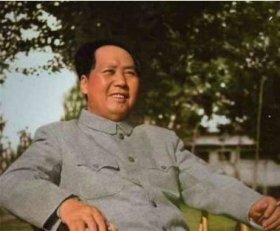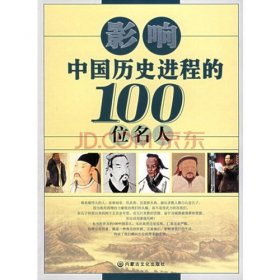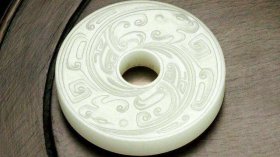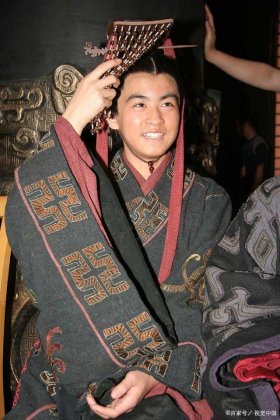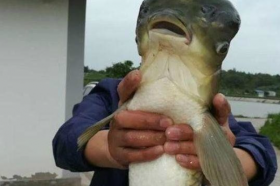转基因大米-非洲亚洲转基因秘密会议公报:转基因Bt棉及其之后发展
-
转基因大米

- 中国历史故事-小虎历史故事网
- 2023-08-15 20:27
- 小虎历史故事网
转基因大米-非洲亚洲转基因秘密会议公报:转基因Bt棉及其之后发展 ,对于想了解历史故事的朋友们来说,转基因大米-非洲亚洲转基因秘密会议公报:转基因Bt棉及其之后发展是一个非常想了解的问题,下面小编就带领大家看看这个问题。
原文标题:非洲亚洲转基因秘密会议公报:转基因Bt棉及其之后发展
贝宁、布基纳法索、印度、孟加拉、印尼、菲律宾、缅甸等非洲与亚洲国家四十多位代表2012月1月16-17日在印度海德拉巴举行“转基因Bt棉及其之后发展”秘密会议后于《国际反对转基因日》(
2012年4月9日)公布了会议新闻公报与详尽报告。
新闻公报详细分析了印度转基因Bt棉2002年种植十年以来如何成为“超级失败”到“经济与生态灾难”。除了单位面积产量问题,转基因Bt棉还对土壤健康造成巨大危险。尽管这种发现受到转基因Bt棉产业代理人的嘲笑,印度顶级棉花科学家、中央棉花研究院负责人柯蓝瑟博士最近的研究证实了这种情况。他的研究揭示,除非使用更多的肥料与水,转基因Bt棉并不比传统非转基因棉杂交品种有更高的产量。其他的国家揭露的类似发展揭示,跨国生物技术公司在印度耍弄的政治在非洲与亚洲其他地方都有反响。
Over forty representatives from Benin, Burkina Faso of Africa, and from India, Bangladesh, Indonesia, Philipines, Burma of Asia, held the “Bt Cotton and Beyond: An Afro Asian Conclave on Genetic Engineering” during Jan. 16-17, 2012 at
Hyderabad, India, then o
n the occasion of International GM Opposition Day, April 9, 2012, announced their Press Release and made public a detailed report on the conference. The Press Release provided detailed analysis on how the ten years cultivation of GM Bt cotton became a “
super flop” and “economic and ecological disaster”.
Besides the yield problems Bt Cotton has been posing a great danger to the soil health. Though this finding was pooh-poohed by the agents of Bt Cotton industry, a later study by Dr Kranthi, the topmost cotton scientist in India and the Head of Central Institute for Cotton Research, Nagpur proves this point. His study revealed unless you use more fertilisers and water, Bt cotton will not yield more than the conventional cotton hybrids. Similar developments revealed in other nations indicated, t
he politics being played by the multinational corporations in India is echoed from all parts of Africa and Asia.
Bt Cotton and Beyond: An Afro Asian Conclave on Genetic Engineering
关于转基因
Bt
棉及其之后发展:转基因非洲亚洲秘密会议
Status and implication of Genetically Engineered crops and post GE technologies for small farmers in Africa and Asia
转基因作物与后转基因技术对非洲与亚洲的地位与启示
– 禁止抗草甘膦转基因作物原料进口、开发、种植、销售理由之228
– The 228th reason to forbid import, development, growing and selling of RR soybeans
译者:陈一文(cheniwan@mx.cei.gov.cn)
Translated by Chen I-wan
《转基因技术与人类安全》研究专家、
80
年代前全国青联委员
“GM Technology & Mankind Safety” researcher
《新浪网》“陈一文顾问博客”:
http://blog.sina.com.cn/cheniwan
转载自:
http://www.ddsindia.com/www/pdf/PR April 9, 2012.pdf
On the occasion of International GM Opposition Day April 9, 2012
发布于《国际反对转基因日》,2012年4月9日

转基因大米-非洲亚洲转基因秘密会议公报:转基因Bt棉及其之后发展
Bt Cotton and Beyond: An Afro Asian Conclave on Genetic Engineering, Jan. 16-17, 2012
关于转基因
Bt
棉及其之后发展:对于转基因问题举行的非洲亚洲会议,
2012
年
1
月
16-17
日
PRESS RELEASE
,
April 9, 2012新闻稿,2012年4月9日
After ten years of its cultivation in India, Bt Cotton has now been described from being a
super flop
to aneconomic and ecological disaster.
2002
年在印度开始种植十年之后,转基因
Bt
棉目前被描述为“超级失败”到“经济与生态灾难”。
Why is it a
super flop
?
为什么是“超级失败”?
Let us consider some trends over the last ten years, since Bt cotton was introduced in India in 2002.
让我们考虑一下转基因Bt棉2002年引入印度以来的某些趋势吧。
This decadal experience clearly tells us that in the five years before Bt cotton spread onto 90% of India/s cotton landscape, the yield jump was 39% which was phenomenal by all accounts. But we must remember that in this spectacular yield increase, Bt cotton can claim very little share since it was being cultivated only on 1.1% cotton area in 2003-4 and just about 5.7% in 2004-5.
这十年的经验清楚告诉我们,转基因Bt棉扩大为印度棉花种植面积90%之前,棉花单位面积产量跳跃式提高了39%,这是所有人都接受的现象。但是我们必须记得,在这引人入胜的单位面积产量增加中,转基因Bt棉仅能够占了很少部分,因为转基因Bt棉在2003-2004年度仅占到棉花种植总面积的1.1%,而在2004-2005年度仅占到棉花种植总面积的大约5.7%。
Obviously non Bt Cotton cultivated in the rest of 94% of area contributed to this great boom in cotton production until the yield reached 470kgs/lint cotton per acre.
显然,棉花种植总面积其余94%的非转基因棉对单位面积产量刀刀470公斤/皮棉/公顷前做出了主要贡献。
YEAR
年度Bt SHARE IN
ARE OF
CULTIVATION
转基因Bt棉占棉花种植总面积的%
YIELD
KGS/LINT
PER
HECTARE
单位面积产量产量
公斤/皮棉/公顷
NET INCREASE
YoY KGS/LINT
PER HECTARE
净增加量
(与前一年相比)
公斤/皮棉/公顷2002-03Base Year 基础年30902003-041.10%39990
2004-05
5.70%
470
71
2007- 0862.00%524552008-0984.00%486-382009-10
85.00%
474
-12
Courtesy: Cotton Advisory Board资料来源:印度棉花咨询委员会What happened since?
2008
年以来发生了什么情况?
Fast forward to 2012.
让我们迅速向前看到2012年期间发生了什么情况。
In 2009-10, when Bt Cotton spread to 85% of India’s cotton landscape, the yield was 474 kgs of lint cotton/Ha., just 4 kgs per hectare. A laughable increase indeed considering the enormous hype and hoopla surrounding it, [See table below] even while cotton farmers are spending nearly 50% more on inputs compared to their conventional cotton cultivation.
2009-2010年度,转基因Bt棉扩展到印度棉花种植总面积的85%,单位面积产量为474公斤/皮棉/公顷,比2004-2005年度单位面积产量为470公斤/皮棉/公顷仅增加了4公斤(1%)。考虑到之前围绕转基因Bt棉天花乱坠的宣传,这样的增产简直是笑话,[参看下边的图表]特别考虑到棉农种植转基因Bt棉的投入与过去传统非转基因棉相比增加了近50%。
In Vidarbha alone, at least one Bt Cotton farmer commits suicide every day, busting the myth of Bt cotton bringing prosperity to cotton farmers.
仅在印度Vidarbha一个地方,造成了每天至少一位转基因Bt棉农自杀,打破了转基因Bt棉将给棉农带来繁荣的神话。
These harsh facts forced the Ministry of Agriculture issue an advisory to State Departments of Agriculture that says “Cotton farmers are in a deep crisis since shifting to Bt cotton”.
这些严酷的事实,迫使印度农业部向各个邦的农业部门发去通告说“自从转向转基因Bt棉以来棉农陷入了深刻的危机”。
“The spate of farmer suicides in 2011-12 has been particularly severe among Bt cotton farmers. In fact cost of cotton cultivation has jumped…due to rising costs of pesticides. Total Bt cotton production in the last five years has reduced,” says the advisory which is based on observations from the Indian Council of Agricultural Sciences, which administers farm science, and the Central Cotton Research Institute, the country’s top cotton research facility.
通告还说,“2011-2012年度的农民自杀潮,在转基因Bt棉农中尤其严重。事实上棉花种植的成本跳跃式上升…由于杀虫剂升高的费用。转基因Bt棉总产量过去五年降低了”。该通告依据负责农场科学行政管理的“印度农业科学委员会”以及印度最高棉花研究机构“中央棉花研究院”的观察。
But very strangely the very Minister who heads the ministry, contradicts his own Ministry’s advisory: “Cotton production has risen from 164 lakh bales in 2004-05 to 340 lakh bales in 2011-12”, he said replying to a question in Rajya Sabha on March 30, 2012.”This is clear cut indication that there is higher production (after use of Bt cotton)” he went on to say.
然而,非常令人奇怪,农业部自己的部长的说法却与农业部该通告的内容有矛盾。2012年3月30日部长回答Rajya Sabha的提问时竟然说:“棉花产量从2004-2005年度的164,000包增加到2011-2012年度的340,000包”,“”这清楚表明(使用转基因Bt棉以后)有更高的产量”。
But what Mr Pawar failed to mention is that since 2005 in just six years India has added 25 lakh more acres under cotton cultivation. More and more cotton cultivation is being done on
irrigated conditions
than before, especially in states like Gujarat who boast of very high cotton production. Both these factors account for a large percentage of yield increase claimed by the minister. Glorifying Bt cotton for this credit is totally undue. If any, the yields under Bt cotton is decreasing since last five years instead of showing an upward trend.但是,帕瓦部长未能提到,2005年以来仅仅六年内,印度增加了250万公顷以上棉花种植面积。与以前相比,更多的棉花在
有灌溉系统的
地区进行种植,特别在夸耀非常高棉花产量的古吉拉特邦。这两项因素是造成农业部长声称棉花产量增加了的主要原因。赞美转基因Bt棉造成了棉花产量增加完全不符合事实。如果有任何变化的话,转基因Bt棉过去五年的单位产量下降了,而非显示出上升的趋势。The same alarming trend has been reported in AP also. According to state government estimates in December 2011, during the Kharif 2011 season in Andhra Pradesh, of 47 lakh acres planted with Bt cotton, 33.73 lakh acres suffered from crop failure. In other words, two-thirds of the cotton area had a yield loss of more than 50%. The data from AP shows that aften ten years of Bt Cultivation, the yields are less than the pre Bt days The graphs also show that in the last 4 years [since 2008], as Bt has risen from 67% to 92% of India’s cotton, yields have dropped steadily.
在安德拉邦,报告了同样的令人警觉到趋势。依据安德拉邦政府2011年12月的预测数据,在安达拉邦2011年秋收季节,在种植了转基因Bt棉的470万公顷中,337.3万公顷遭受了减产。换句话讲,棉花种植面积的三分之二遭受了超过50%的减产。安德拉邦的数据表明,转基因Bt棉种植十年后,单位面积产量比种植转基因Bt棉前降低了,而不是提高了。下边的图表表明,2008年以来过去4年,随着转基因Bt棉从印度棉花种植总面积的67%增加到92%,单位面积产量稳步下降。
In the face of these straight facts why did Mr Pawar choose to contradict his own ministry? Many people believe that Mr Pawar’s association with the multinational agro chemical industry is too close to comfort and he always chooses to stand by them whether it is on the issue of GE crops or FDI in food retail. Please do recall that in the entire Bt Brinjal moratorium issue he stood out like a sore thumb in the Indian Government.
面对这些清楚的事实,农业部长帕瓦先生为什么选择与自己农业部的通告内容相矛盾?许多人相信,帕瓦先生与跨国农业化学产业的关系过于紧密,致使他在转基因作物或外国投资于零售业这样的问题上,总是选择站到他们的立场上。请回顾一下,在整个转基因Bt茄子暂缓问题上,农业部长站出来在印度政府惹人注目的样子。
Soil Health & Bt Cotton
土壤健康与转基因
Bt
棉
Besides the yield problems Bt Cotton has been posing a great danger to the soil health.
除了单位面积产量问题,转基因Bt棉还对土壤健康造成巨大危险。
As far back as 2003, researchers of DDS who were studying Bt Cotton in Warangal, Nalgonda and Adilabad Districts of Andhra Pradesh reported increasing soil toxicity. In 2005, they had unequivocally held Bt cotton responsible for Rhytectomia, a root rot disease that makes entire cotton plants wilt away and also make other crops impossible to grown on those soils next season.
早在2003年期间,印度《德干发展学会》(Deccan Development Society)的研究者们对转基因Bt棉进行调查研究时,那尔贡达邦的瓦朗加尔地区以及安德拉邦的阿迪拉巴达区有报告说土壤毒性有所增加。2005年,他们确认转基因Bt棉对Rhytectomia负有责任,这是一种根本腐烂疾病,造成整个棉花作物枯萎,甚至使其他作物下一季在这样的土壤中无法生长。
Though this finding was pooh-poohed by the agents of Bt Cotton industry, a later study by Dr Kranthi, the topmost cotton scientist in India and the Head of Central Institute for Cotton Research, Nagpur proves this point.
尽管这种发现受到转基因Bt棉产业代理人的嘲笑,印度顶级棉花科学家、中央棉花研究院负责人柯蓝瑟博士最近的研究证实了这种情况。
Dr Kranthi wrote :
“Bt-cotton hybrids utilize more nutrients and water for higher yields and profits, therefore the soils are getting progressively 中国历史故事字数不多也不少
depleted and need more nutrient recharging.”
In other words what he was saying was, unless you use more fertilisers and water, Bt cotton will not yield more than the conventional cotton hybrids.柯蓝瑟博士博士的论文写道:“
转基因
Bt
棉杂交品种消耗更多营养与水以求获得更高产量与收益,因此土壤日益贫乏并且需要更多营养投入
”。换句话讲,他说,除非使用更多的肥料与水,转基因Bt棉并不比传统非转基因棉杂交品种有更高的产量。He had observed a
soil fatigue
which is now seen as a major cause of Bt Cotton failure in places such as Vidarbha and the resultant suicides.他所观察到的土壤使用过度,现在已经是转基因Bt棉在Vidarbha地区减产及其造成的自杀的主要原因。
Afro Asian Conclave on Bt Cotton & Beyond
关于转基因
Bt
棉及其而后发展的非洲亚洲内部会议
It is this Indian context of Bt Cotton which prompted the Southern Action on Genetic Engineering to hold an Afro Asian Conclave on Bt Cotton to find out if these experiences were peculiar to India or were there similar experiences elsewhere as well. The results are revealing. The politics being played by the multinational corporations in India is echoed from all parts of Africa and Asia.
正是转基因Bt棉在印度的这些状况推动《对转基因的南方行动》组织对于转基因Bt棉举行一次的内部会议,以便找出这些状况仅与印度有关,还是其他地方同样的经历。会议的结果将真相揭露出来。跨国生物技术公司在印度耍弄的政治在非洲与亚洲其他地方都有反响。
In West Africa there is a concerted effort by the USAID and the AGRA initiative of the Bill and Melinda Foundation as well as by the biotech industry to usher in a New Green Revolution via Bt Cotton and other GE crops in the face of a stiff resistance offered by farmers and environmentalists.
在西非,美国国际开发署(USAID)、比尔盖茨与梅琳达基金会(Bill and Melinda Foundation)倡议的《在非洲争取农业绿色革命胜利》(Achieving the Green Revolution in Africa),与跨国生物技术产业协调努力,通过转基因Bt棉与其他转基因作物强行推动 “绿色革命”,尽管面临当地农民与环境保护人士强烈反对。
In the Phillippines the resistance took the form of declaration of
GM Free regimes
by different island states and municipalities.在菲律宾,当地的抵抗采取积极的方式:不同岛屿与城市宣布建立“无转基因区”。
But still the assault of GM Corn and pressure to grow Bt Eggplant on the national government continues to haunt the Fillippinos. Bangladesh faces the prospect of the introduction of GE Rice for the first time on this continent.
但是转基因玉米的袭击以及对菲律宾政府施压让他们批准转基因Bt茄子种植的企图经常侵扰菲律宾民众。孟加拉面临亚洲大陆第一次引入转基因大米的前景。
Indonesia is perhaps the only country that has given a resounding slap on the face of biotech industry. They uprooted all the Bt Cotton plants grown in the Sulawesi region, burnt them and sent Monsanto packing home. The $700,000 bribe offered by Monsanto to local authorities to permit them to continue to grow their cotton, the uncovering of this scandal by the US Department of Justice and subsequent fines of $150,000 imposed on Monsanto is now a part of the folklore of scandals.
印度尼西亚大概是世界上唯一对跨国生物技术产业打了一个响亮嘴巴的国家。他们根除并烧掉了在苏拉威西地区的所有转基因Bt棉作物,同时让孟山都打包回家。孟山都向当地官员贿赂了70万美元批准他们继续种植转基因Bt棉,美国司法部揭露了该丑闻对孟山都罚款15万美元,成为津津乐道民间故事中的丑闻。
All these are issues that the
Afro Asian Conclave on Bt Cotton and Beyond
has sought to explore by bringing in experiences from different parts of Asia and West Africa.所有这些问题,成为
关于转基因
Bt
棉及其而后发展的亚非内部会议
汇集亚洲与西非不同地区经历中揭露出来的内容。Today on the occasion of International GMO Opposition Day, we in the SAGE are proud to present you this extremely illustrative report of the
Afro Asian Conclave: Bt Cotton and Beyond.
We hope this adds to the already burgeoning knowledge on the dangers of GE in food and farming.今天,在《国际反对转基因生物日》这个特别的日子,我们《对转基因的南方行动》(SAGE)自豪的向你们呈交关于这次
转基因
Bt
棉及其而后发展的亚非内部会议的极为详尽报告。
Link to download complete report:
全文报告下载链接:http://www.ddsindia.com/www/pdf/B&B Report.pdf
Deccan
Development Society
德干发展学会
ddshyderabad@gmail.com
P. V. Satheesh
P. V. 萨瑟额士
National Convenor
会议国家召集人
Southern Action on Genetic Engineering
《对于转基因的南方行动》组织
Some of the points of
the Afro Asian Declaration on GE Crops and GE Technology
of “Bt Cotton and Beyond: An Afro Asian Conclave on Genetic Engineering”, Jan. 16 – 17, 2012
2012
年
1
月
16-17
日举行的
“
关于转基因
Bt
棉及其之后发展:对于转基因的亚非内部会议
”
的非洲与亚洲对转基因作物与转基因技术宣言几项要点
“
GE Crops are not a solution to either climate change of achieving food security for a growing world population…
“转基因作物不是气候变化状况下为不断增长世界人口实现食品安全的解决方案
…
Inter-Governmental agreements, with GE as the star attraction, are threatening to take over the future of agriculture…
以转基因作为吸引人明星的政府间协议,正在威胁掌握农业的未来
…
It is disheartening that despite failure and repeated negative evidence of impacts, Bt 用英语读一读中国历史故事
cotton and other GM products are relentlessly promoted by various governments…
尽管遭到失败而且重复暴露有害影响的证据,令人诅丧的是某些政府持续不懈继续推动转基因
Bt
棉与其他转基因产品
…
GE centered agriculture requires ecologically damaging and expensive chemical inputs which are under control of large corporations…
以转基因为核心的农业要求不断投入大型公司控制的破坏生态的昂贵的化学品
…
GM is against organic evolution, against biodiversity.
青川县中国历史名人故事
转基因对抗有机进化,对抗生物多样性。
There is move towards GM animals such as “Enviropig” and GM Atlantic Salmon. This is also linked to factory farming of the fish where the GM Salmon is sought to be marketed…”
出现了趋向例如“环保猪”与转基因大西洋鲑鱼这样的转基因动物的动态。这与寻求推销转基因大西洋鲑鱼的工厂化生产鱼有联系
…
”
陈一文博客2012-04-19 21:06:31
相关研究资料:
陈一文:中国真正共产党人三代真诚的朋友
http://blog.sina.com.cn/s/blog_4bb17e9d01017r5c.html
印度妇女要求全面禁绝转基因Bt棉的备忘录(英中文对照)
http://blog.sina.com.cn/s/blog_4bb17e9d0102dz5z.html
印度妇女呼吁全面禁绝Bt棉焚烧转基因魔鬼起诉Bt棉经销商
http://blog.sina.com.cn/s/blog_4bb17e9d0102dz54.html
对待“新一代转基因作物”正确立场印度环境部长做出表率
http://blog.sina.com.cn/s/blog_4bb17e9d0102dz4a.html
参考消息:印度正经历“转基因大屠杀”(原文英中对照)
http:
中国历史上关于雪的故事
//blog.sina.com.cn/s/blog_4bb17e9d0102dz49.html(责任编辑:admin)
原文出处:http://his.newdu.com/a/201711/22/549592.html
以上是关于转基因大米-非洲亚洲转基因秘密会议公报:转基因Bt棉及其之后发展的介绍,希望对想了解历史故事的朋友们有所帮助。
本文标题:转基因大米-非洲亚洲转基因秘密会议公报:转基因Bt棉及其之后发展;本文链接:http://gazx.sd.cn/zggs/20402.html。
下一篇:明朝-道家与茶饮方式的变迁
猜你喜欢
- 转基因食品-2011转基因问题大事记(上篇) 2023-08-14
- 大米-转基因:金色大米是高风险的药品大米——再评黄大昉的转基因推销之假话(一) 2023-08-13
